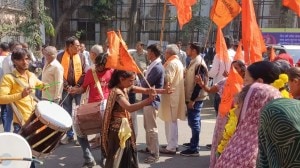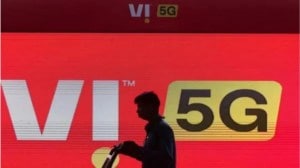Failed state? Coups and crises plague Pakistan
Pakistani President Pervez Musharraf's declaration of a state of Emergency on Saturday has triggered a wave of protests and demands from Opp...

Pakistani President Pervez Musharraf’s declaration of a state of Emergency on Saturday has triggered a wave of protests and demands from Opposition politicians for the leader of eight years to stand down.
The US-based Foreign Policy magazine rates Pakistan as the world’s 12th most unstable ‘failed state’.
Here is a chronology of some of Pakistan’s major political crises during the past six decades:
* Aug. 14, 1947: Pakistan is formed from partition of India at end of British rule. Country comprises two geographically separated territories — West Pakistan (modern-day Pakistan) and East Pakistan (now Bangladesh). Nation’s founder and first governor-general, Muhammad Ali Jinnah, dies in Sept. 1948.
* Oct. 1951: Prime Minister Liaquat Ali Khan is shot dead.
* Oct. 1958: Governor-General Iskander Mirza enforces martial law. General Ayub Khan, Chief Martial Law Administrator, later becomes president and sacks Mirza.
* Jan. 1969: Widespread riots in East and West Pakistan over issues of regional autonomy. In March, Ayub Khan resigns and hands power to General Yahya Khan, who imposes martial law.
* Dec. 1970: Pakistan holds first free elections in 13 years. Zulfikar Ali Bhutto wins in West Pakistan. Awami League wins nearly all seats in East, giving it overall majority nationwide. Yahya and Bhutto refuse to allow it to form government.
* Dec. 1971: Full-scale war breaks out between India and Pakistan over East Pakistan. It ends with surrender of 90,000 Pakistani troops and leads to creation of Bangladesh. Yahya hands power to Bhutto, who takes over as prime minister in 1973.
* July 1977: Bhutto is deposed in military coup and imprisoned; army chief General Mohammad Zia-ul-Haq takes power, imposes martial law and promises elections. He lifts seven-year-old state of Emergency in September.
* April 1979: Bhutto is hanged on disputed conviction for conspiring to commit political murder. In October, Zia postpones elections indefinitely, and bans political parties.
* Aug. 1983: President Zia promises to hold elections by March 1985 and to lift martial law. Days later 20,000 anti-government protesters clash with 10,000 government supporters in Karachi.
* Feb. 1985: Elections held. Zia sworn in as President for five-year term in March. By December he has lifted martial law and state of Emergency, in place since March 1969.
* Aug. 1988: Zia dies in plane crash in Pakistan.
* Nov. 1988: Benazir Bhutto, daughter of Zulfikar, wins elections.
* Aug. 1990: President Ghulam Ishaq Khan sacks Bhutto and Cabinet for corruption and abuse of power. State of Emergency declared. In November, Nawaz Sharif is elected prime minister.
* 1993: Ishaq Khan dismisses Sharif’s government, accusing it of corruption. Bhutto becomes Prime Minister again.
* Nov. 1996: President Farooq Leghari sacks Bhutto and calls elections, which Sharif wins.
* Oct. 1999: Army chief Pervez Musharraf seizes power in bloodless coup. Sworn in as President in June 2001, he wins controversial referendum extending his rule for five more years in April 2002.
* March 9, 2007: Musharraf suspends Supreme Court Chief Justice Iftikhar Chaudhry on charges of misconduct, setting off protests by lawyers and Opposition politicians. Top court reinstates Chaudhry in July.
* Nov. 3: Musharraf declares state of Emergency and suspends constitution. Hundreds of lawyers and Opposition figures arrested in coming days. Protests condemn Musharraf’s ‘mini-martial law’.



- 01
- 02
- 03
- 04
- 05




























